I didn’t know I was going to walk Nakasendo Way on this trip to Japan but it was in the cards after all.
“You scared me,” I laughed in the general direction of my roommate, who’d been trying to come in the front door of our big, red bungalow literally the moment I was opening it to leave. He didn’t respond or even make further eye contact—he slipped past me and inside the house.
I fiddled with the lock for what felt like an eternity. My hand were shaky on account of the startle I’d received, yes, but something else was amiss.
Just then, I noticed Penny standing just to the right of the door on the porch, looking exactly how she had the last time I’d seen her.
Without a moment’s hesitation, I dropped down to her level and kissed her on her spotted head. “I’m not going to leave you leave me again,” I whispered, and embraced her as tightly as I could. “Never.”
But she was gone the moment I opened my eyes.

The ceiling of my hotel room was at least twice as far from the floor as the window was from the door, which is to say that volume-wise, it was quite a large living space for Tokyo.
According to said window it was still pitch dark outside, the bright lights of Shinjuku notwithstanding. I felt paralyzed by my vision, which had begun like a dream and ended like a nightmare, but I was anxious to see what time it was. I wanted to watch the sunrise.
You can’t always control the light, I consoled myself, when daybreak consisted of nothing more than black lightening into grey, and dragged my ass out of bed toward the nearest Mr. Donut. The world is not a camera.
I certainly couldn’t control Tokyo, or even the way I moved through it. Although I managed to make it on the 4:19 p.m. Narita Express (my flight parked at the gate at 3:55, to give you an idea of how fast I moved), it was nearly six o’clock before I traversed hectic Yasukuni Dori into Kabukicho.
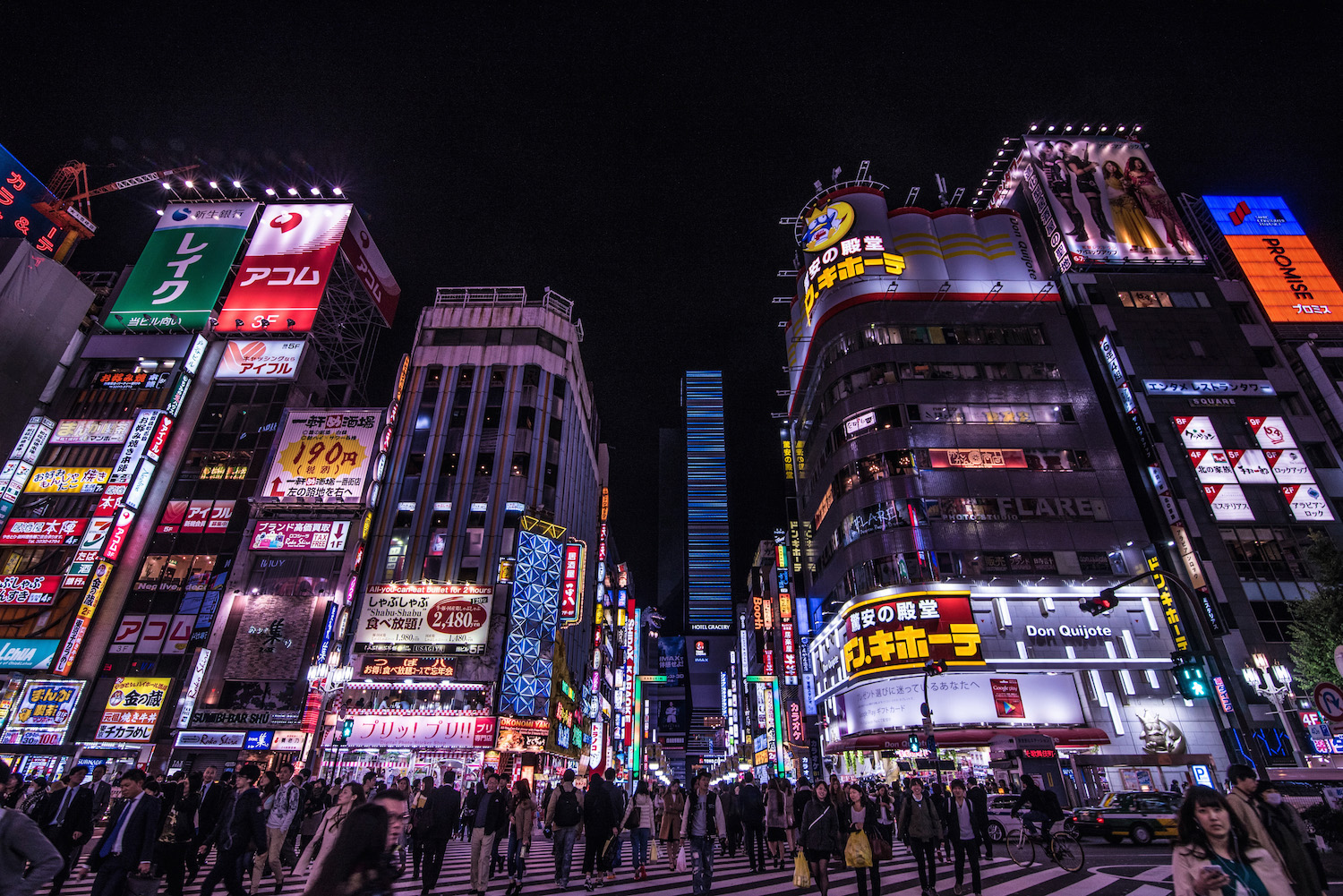
Another 90 minutes would pass before I reached the sky deck of the Mori Tower in Roppongi Hills, a viewpoint I’d managed to miss on all of my previous visits to Tokyo. My protracted timetable was as much due to the city’s vast footprint as it was my own penchant for taking trains going in wrong directions.
I returned to Shinjuku feeling far more exhausted than I should’ve, given the short time and expanse of my jaunt. The rainbow of neon lights that lined the roads leading back to my hotel was like a technicolor lullaby that stopped short of putting me to bed, but made me comatose enough to shrug off the Nigerian hustlers who tried to lure me into “hostess” clubs along the way.
But most every sign was darkened by the time I reached the doughnut shop, legions of partygoers reduced to only the stragglers with sensitive stomachs, who were vomiting in the streets or comforting their sick friends, the hustlers too hoarse to do anything but wave you in the direction of the clubs they were promoting. The crosswalks where I’d almost met my end the night before were deserted.
The world’s most populous city felt empty, and so did I: Penny died seven years ago today.

I felt charmed as I spotted the first bell along the path just outside the village of Magome, in the foothills of the Japanese Alps. I guess this has something to do with Shintoism, I smiled and walked closer to it.
Not so. Ring loudly, the note attached to the bell read, in uppercase Times New Roman font. To keep bears away.
The road ahead paved with fallen yellow Gingko leaves, the vast forest dark enough to house tigers and lions—or at least scarecrows and tin men—I felt like some kind of Twilight Zone Dorothy. But as much as I wished I could click my heels together when I spotted the first oriental hornet buzzing overhead (you know, the ones whose stings leave scars like bullet holes), there was nary a wizard, tornado or a single bejeweled slipper in sight.
Paradoxically, while this sort of total freedom—I didn’t see another human being for basically the entire walk, oh my!—is precisely what I craved all the years before I started traveling, it always terrifies me when I truly achieve it. And the solitude of it, the excitement and anxiety and fear and longing that all expand outward without any walls to contain them and without love to cool their heat.
Before Penny died, I used to calm myself when I’d get upset about her impending departure by thinking how free I’d finally be, but it is precisely in my freest moments that all I want is to help my decrepit dalmatian up the stairs one more time.
Thankfully, my proverbial Emerald City was much nearer than Oz. Tsumago-juku, the sign a few hundred meters ahead read. 6.6 km.
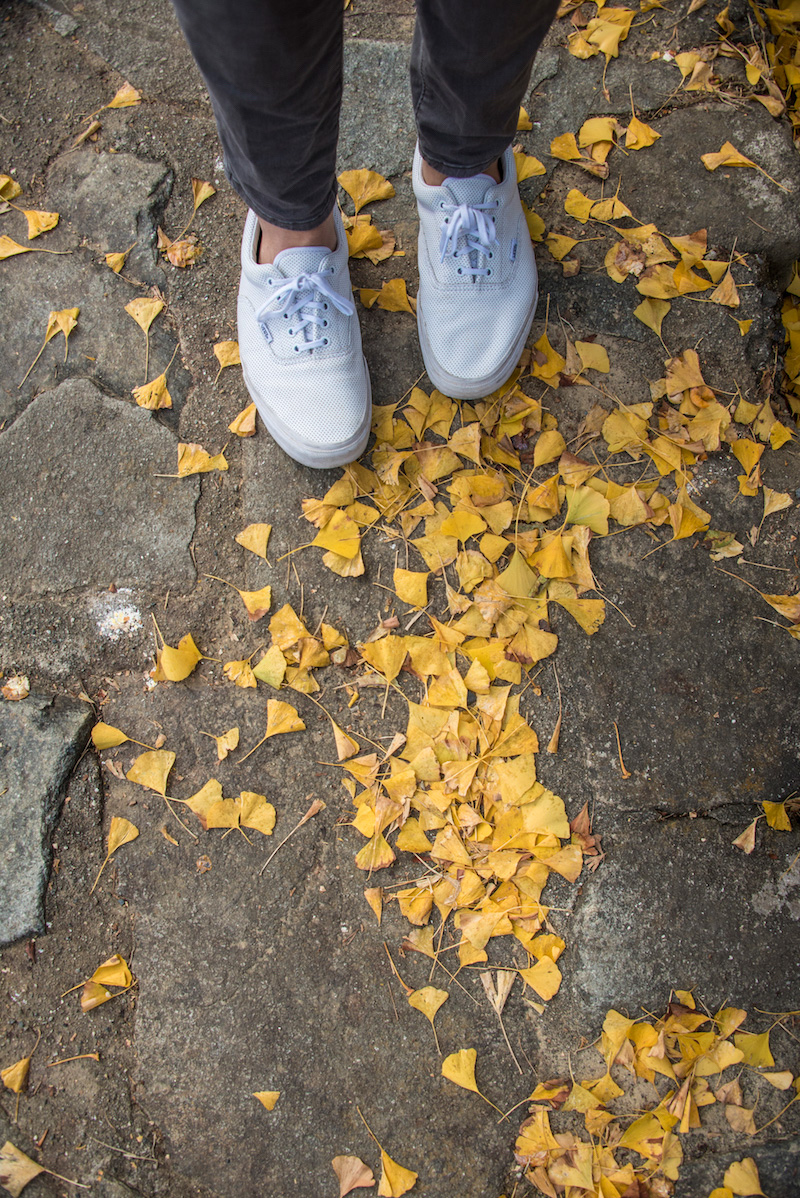
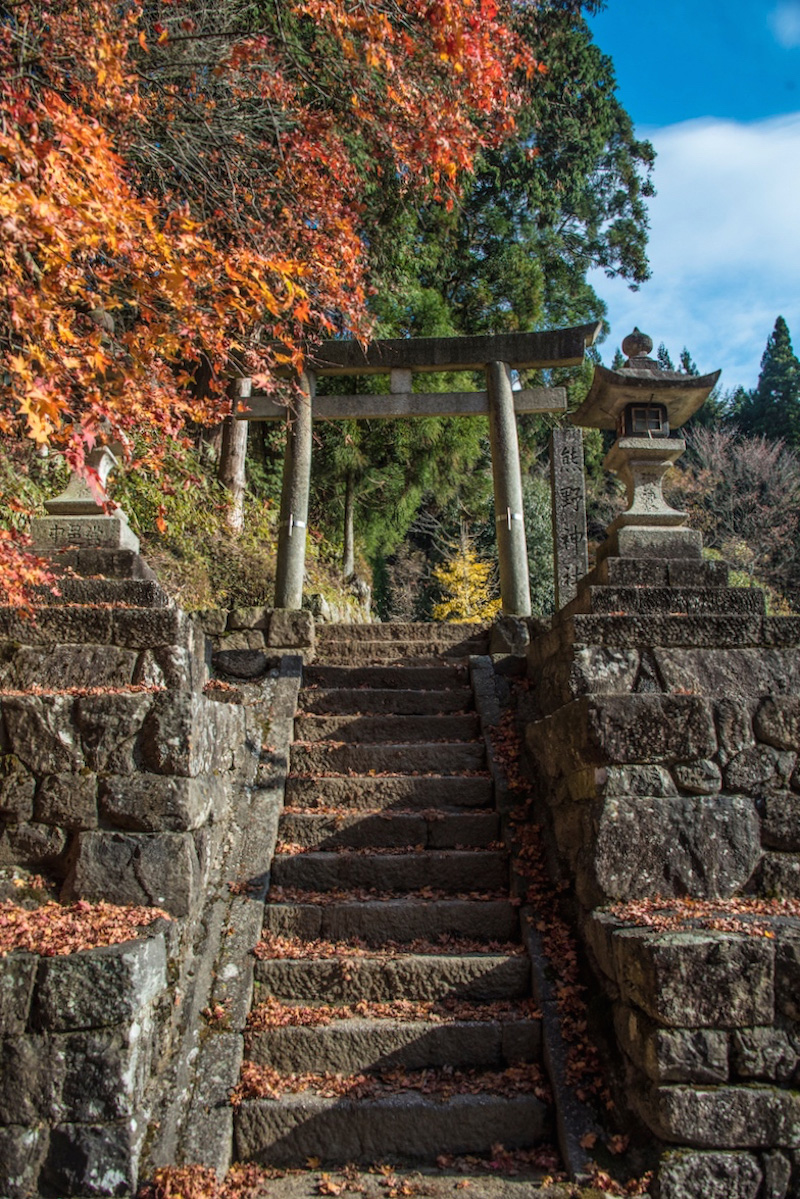
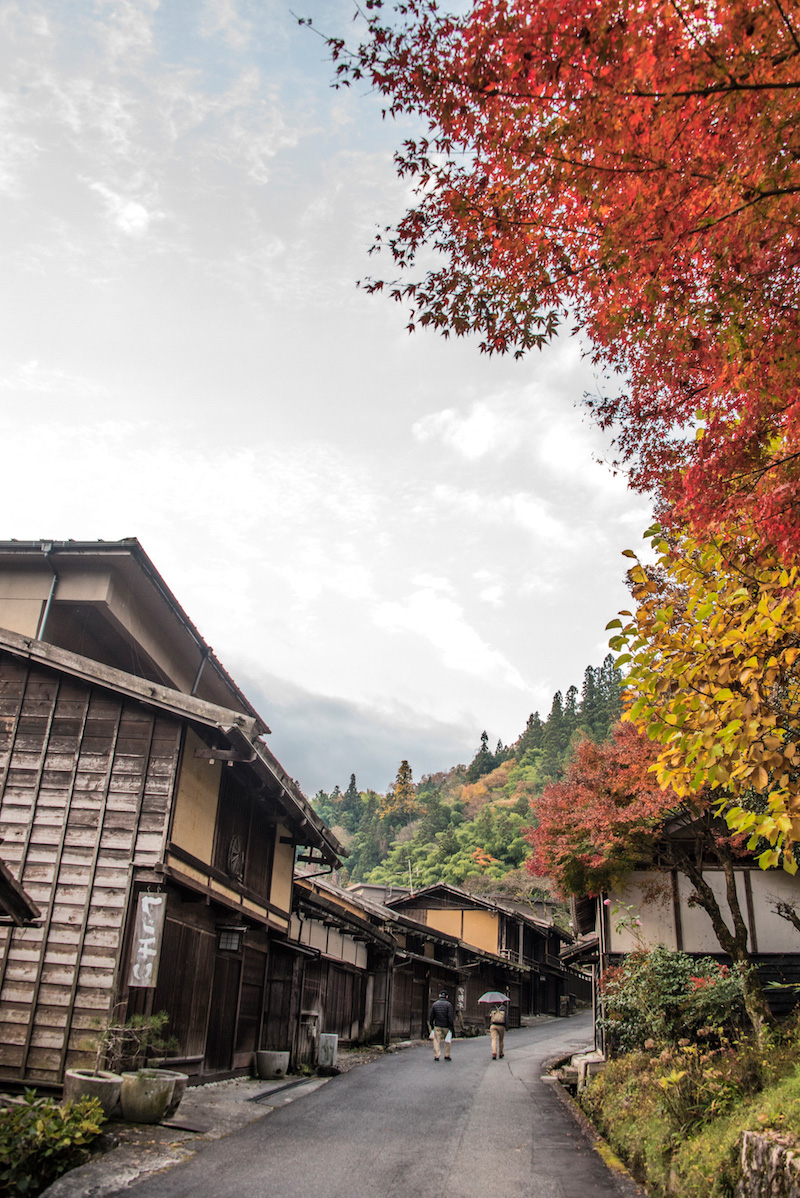
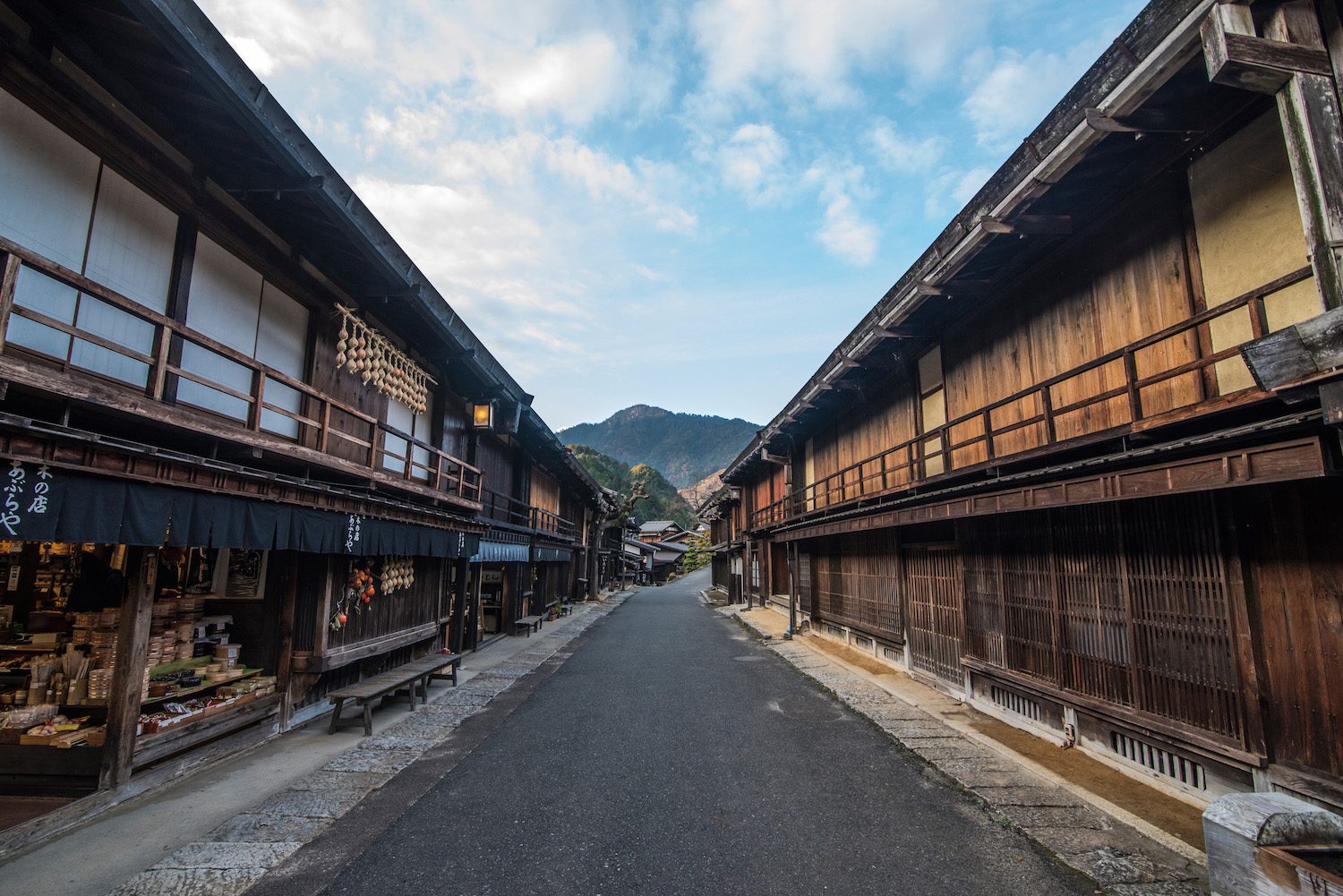
Nakasendo Way is a must do when you go to Japan
Walking Nakasendo Way
As is the case for more of my trips than you might imagine, my desire to walk a portion of the Nakasendo Way, an ancient trading route between Kyoto and Tokyo, was much more of an impulsive decision than an informed one. A couple I’d planned a trip for back in August requested that I include it in their itinerary and, having seen photos of the route framed by autumn leaves as I completed my research, I decided the route would be an ideal stone to kill both of the birds—that I should return to Japan this year; and that I should see fall colors when I do—who were singing in my ear.
They died quickly: I arrived to my Nakasendo trail accommodation later that evening, after just four total hours of walking the route, craving a more distant horizon. And, I very quickly came across one.
“Kamikochi,” the traveler replied, when I asked her the name of the place in the pictures she was flipping through on her Windows phone, the only one I’ve seen outside of House of Cards. “Between Matsumoto and Takayama.”
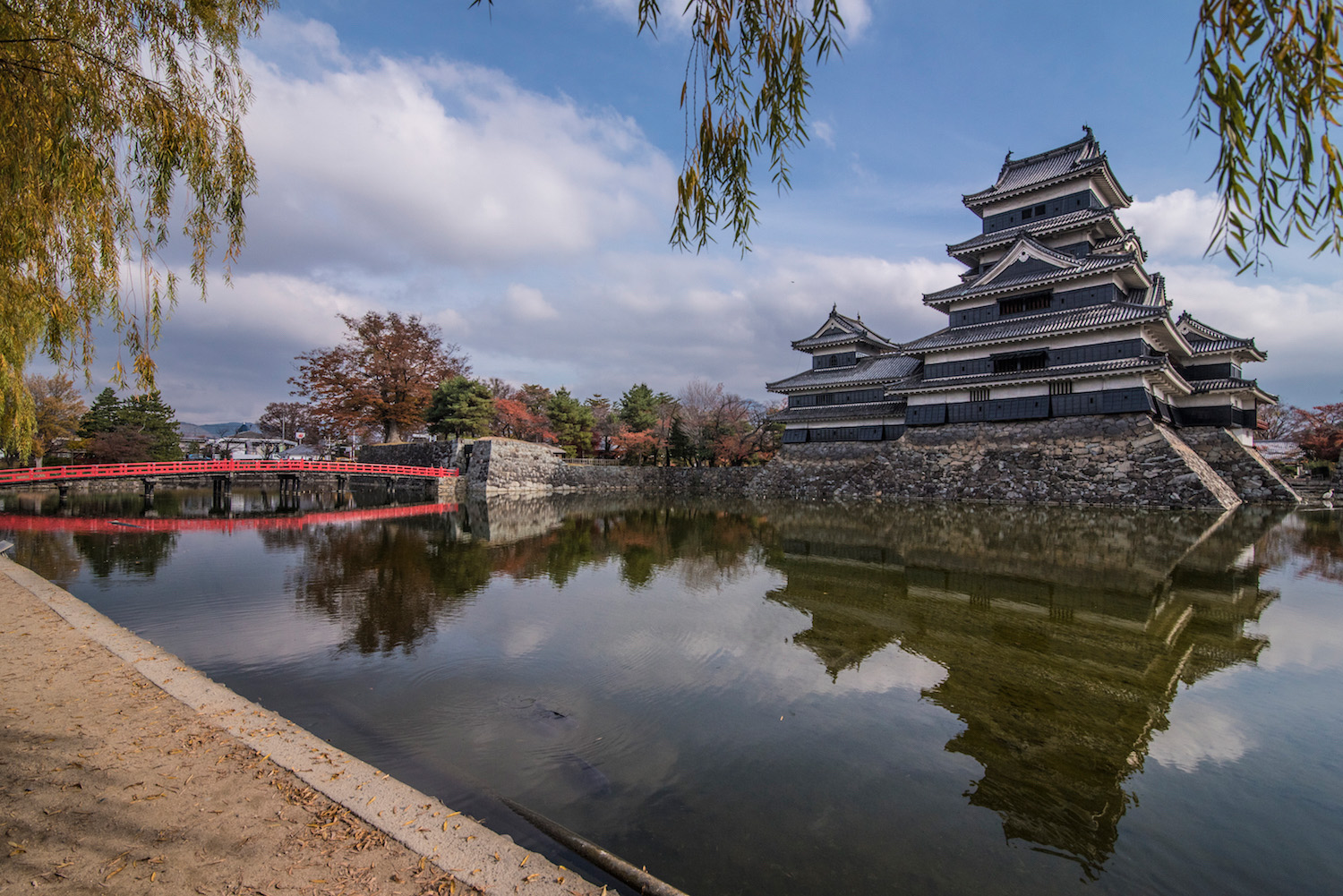
I recently re-discovered my love for 80s pop icon Taylor Dayne, and so while it might seem strange that I would rock out to chart-toppers like “Tell It to My Heart” and “Love Will Lead You Back” as the bus I was on careened through the Japanese Alps, they somehow proved the perfect soundtrack to my journey: They distracted me.
You see, I’m an extremely optimistic person, but optimism is rooted in hope, which in many cases takes the form of expectations. And while I’d seen probably 200 pictures of Kamikochi before I got on my way, I didn’t expect the reds, oranges and yellows that painted the hillsides outside my window to disappear as quickly as they did on the way up the mountain to the national park, to say nothing of how quickly the blue skies that had gleamed over Matsumoto turned grey and dark.
I won’t mince words: The scene waiting for me when I walked onto the iconic Kappabashi Bridge was barren and dead. It was beautiful in its way, of course, the clear waters of the Asuza River flowing a vibrant turquoise color, in spite of the gloom that billowed over them, but I felt shortchanged, and not just because the bus ticket had cost me a cool ¥4,500. I felt disappointed in myself for being so ungrateful after all the amazing experiences I’ve had, for acting like the spoiled child I was in Kindergarten, when Taylor Dayne still got played on the radio, when the idea that I might one day have a dog of my own was as foreign to me as the possibility that I might one day travel the world.
I can’t believe you’ve got a heart of stone, I sighed, as I turned my back on the scene that just wasn’t splendid enough for me. I can’t believe it.

The beauty of Nakasendo and the Japanese Alps
Japan is nothing, if not a land of balance. I couldn’t sleep past 4 a.m. the morning I departed for Takayama, and it was pissing rain and no more than 10ºC outside, but as I walked into Circle K to purchase my convenience store breakfast, the Star Wars theme was playing. Today is going to be a good day, I vowed, and began tearing into my chocolate-covered waffle.
I was nearly to Takayama when news of the attacks in Paris began to dominate my social media. I’m so happy to be in a country where religion is essentially non-existent, I sighed happily as I spotted the city in the distance. Today really is going to be a good day.
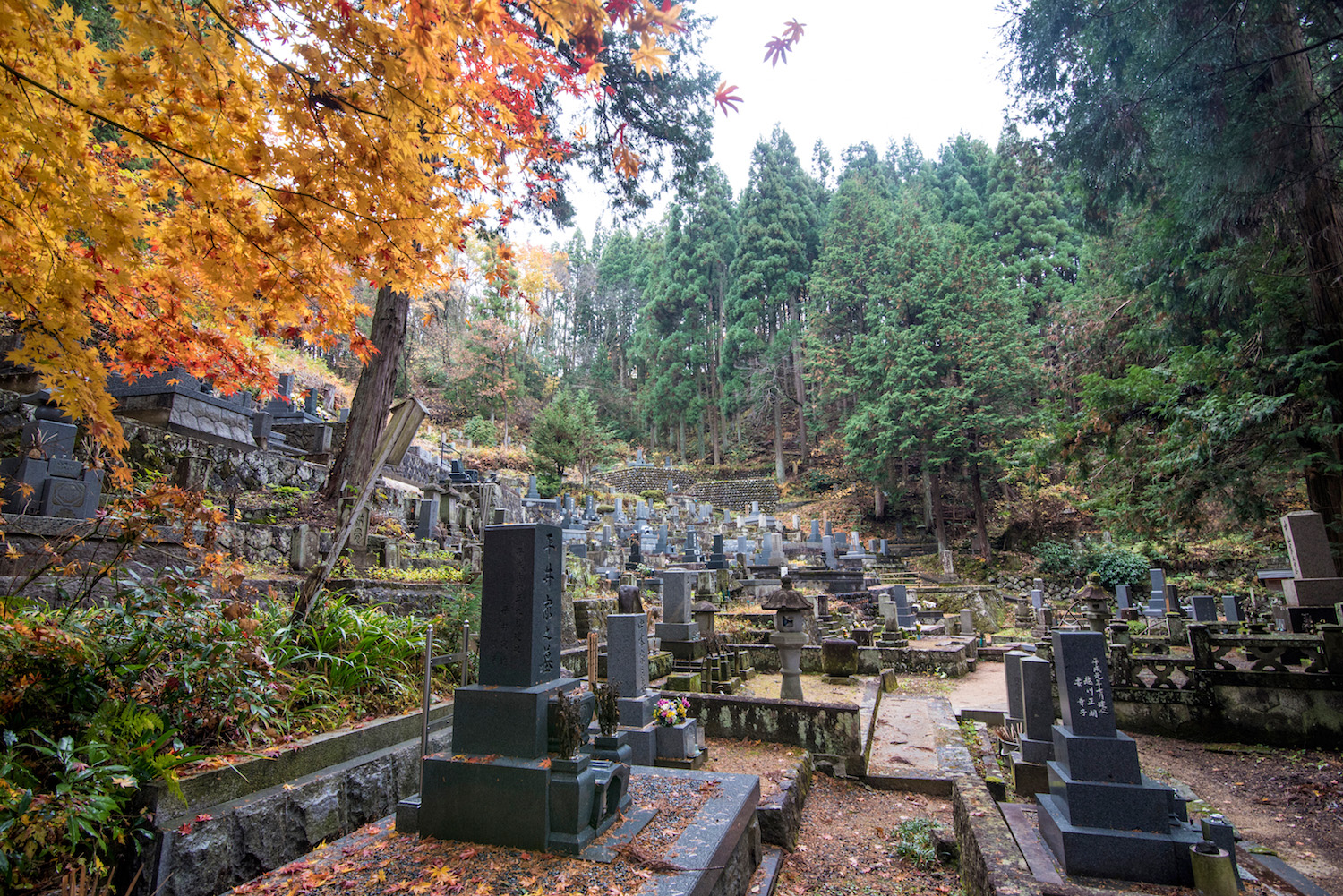
Non-existent, or at least in the background, as was the case in the splendid graveyard I happened upon while traipsing through Takayama. If I wasn’t a photographer, I’d probably never visit graveyards—or any sacred sites, for that matter. I feel nothing when I’m walking through them, except pissed off at what a waste of land, money and human energy they signify. And perhaps also the urge to break out into Michael Jackson’s “Thriller.”
But that’s a little bit of a lie, right? I asked myself as I made my way over the crimson Nakabashi Bridge toward my guesthouse. I mean, Penny sure seemed real the other night.
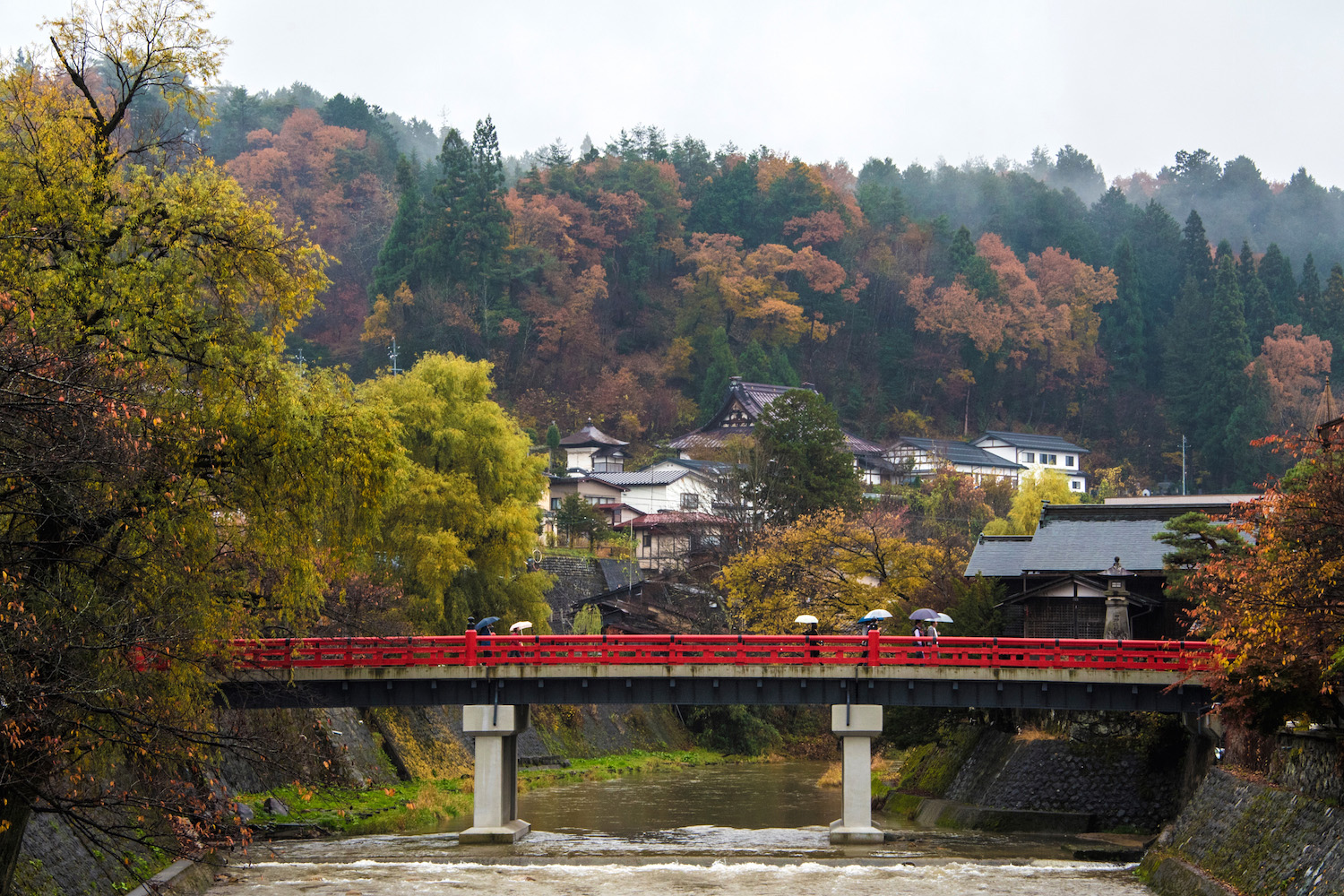
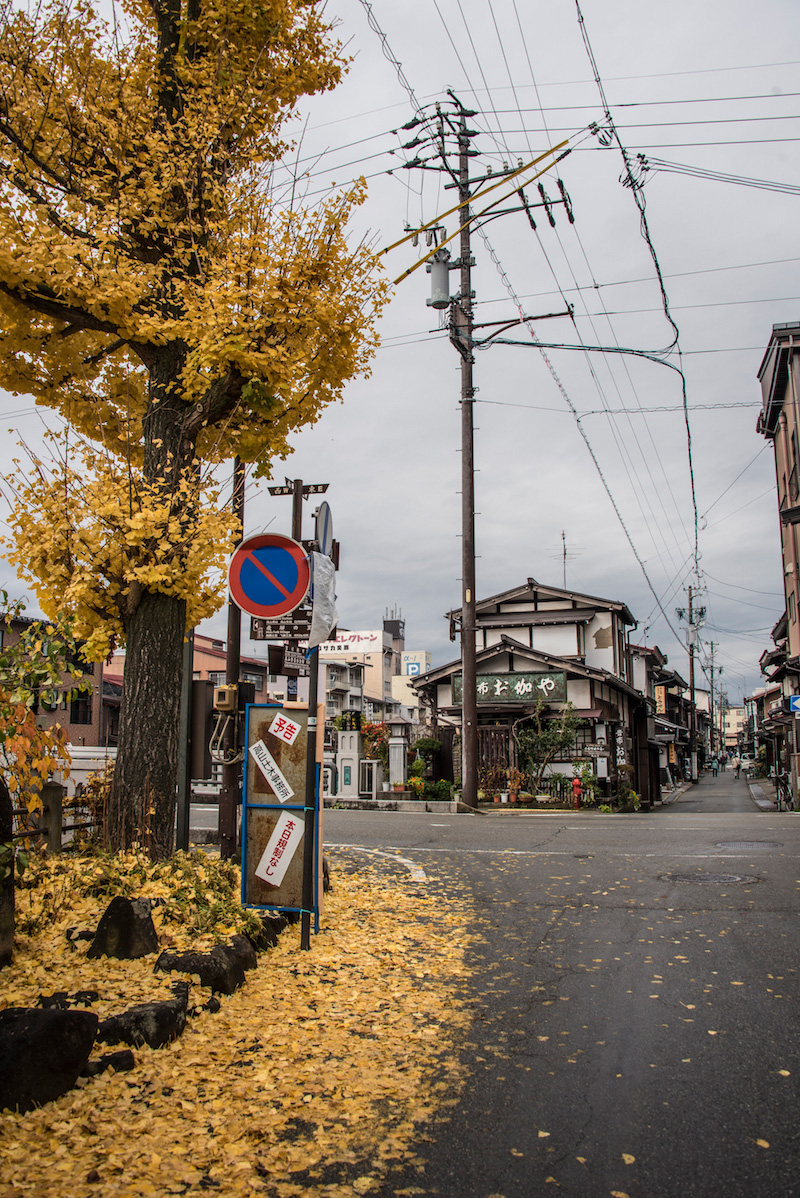
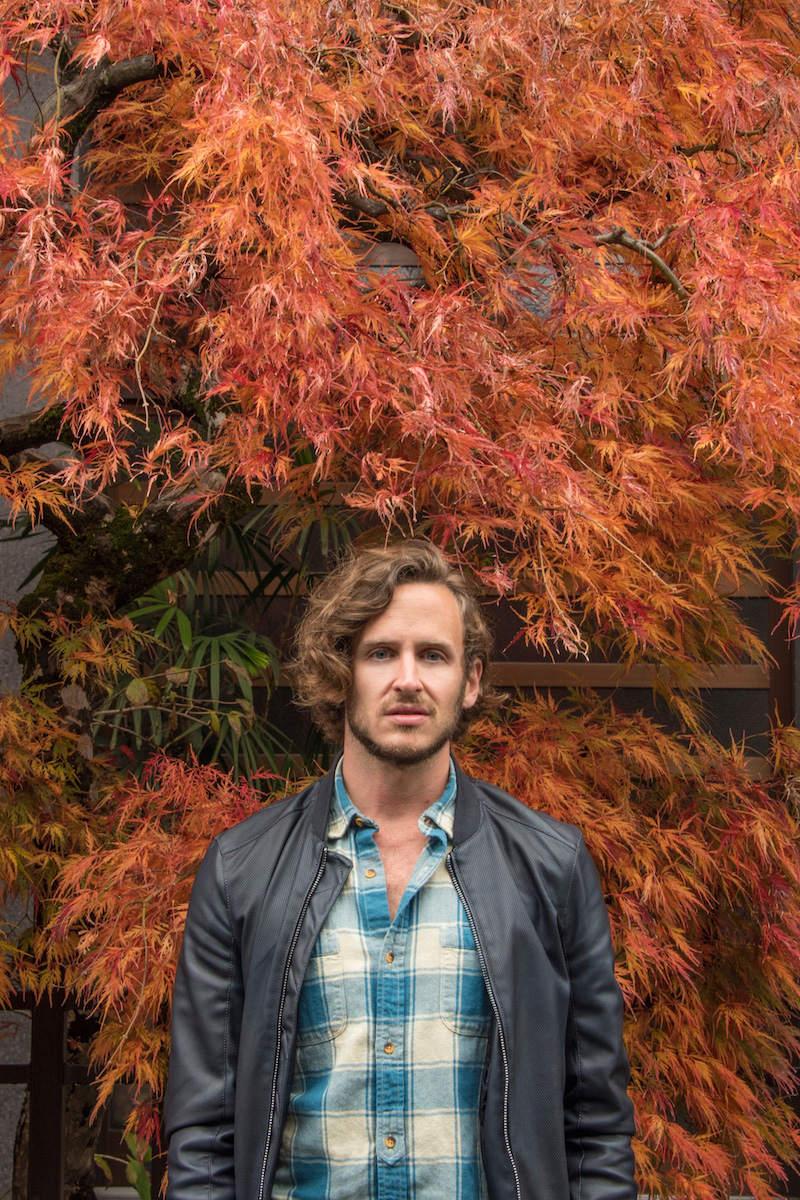
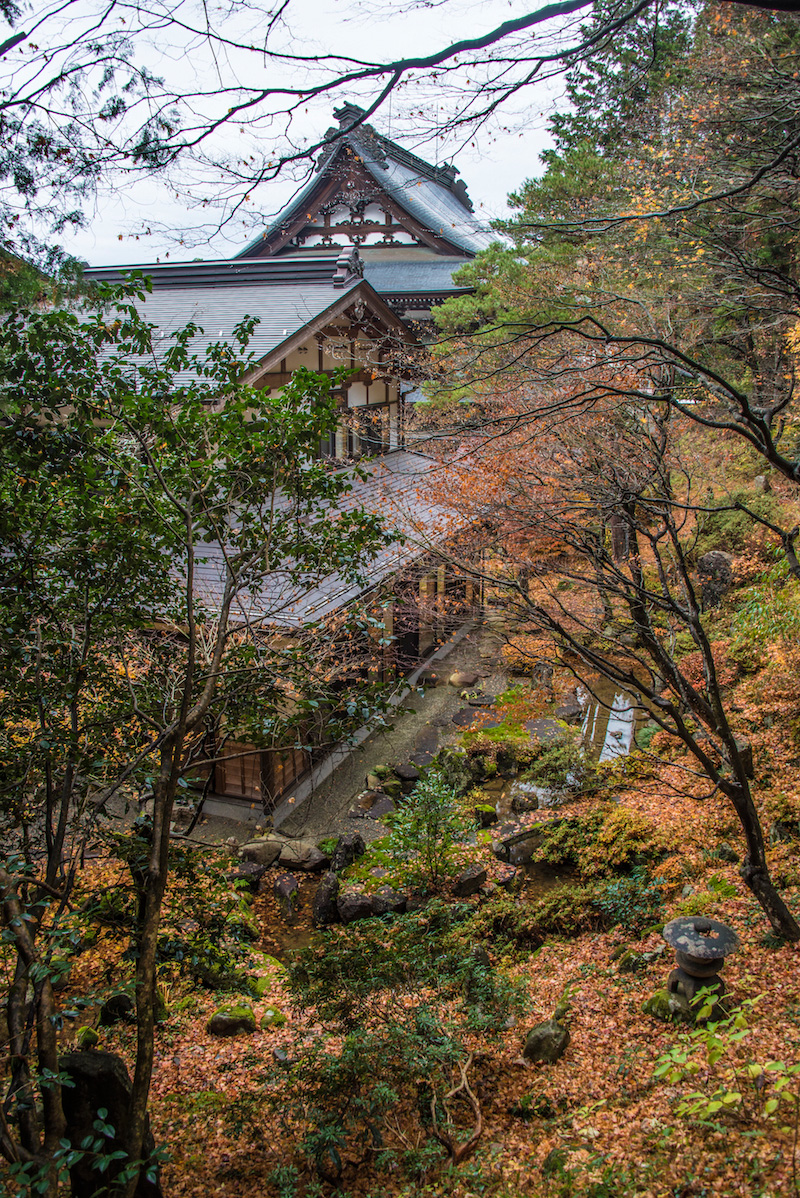
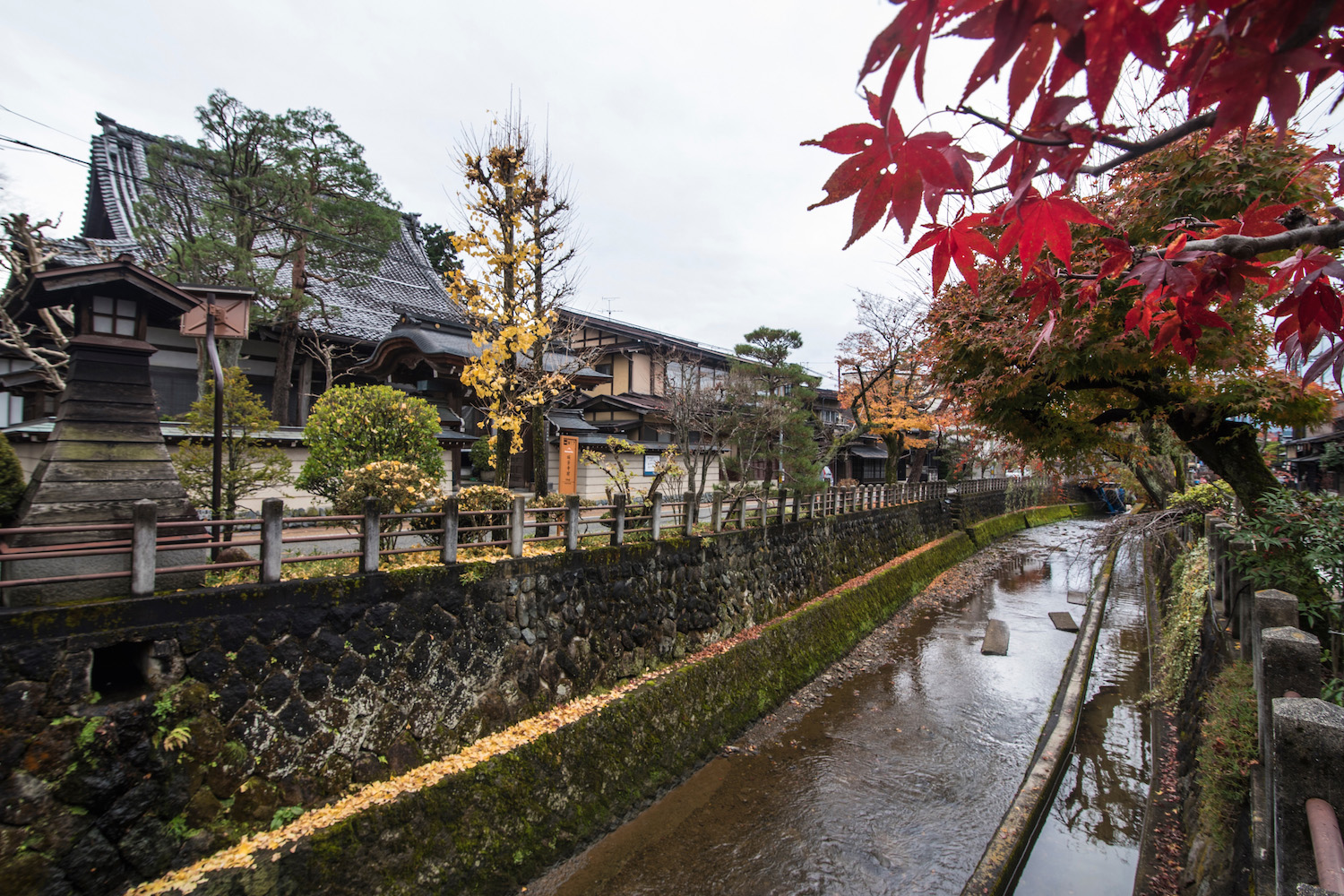
One superstition I’m particularly fond of, my disdain for religion notwithstanding, is the oft-cited “fact” that your entire body regenerates every seven years—every single cell. It might be rooted in science, I guess, but it just sounds like one of those lines someone used at a party once and spread around the world. I’ll have to check Snopes when I have a minute. It sounds plausible enough, however, which is how I imagine many people feel about religion, and tradition in general.
“Would you like to drink some green tea?” The yukata-clad woman asked me. “For free.”
“Yes,” I blurted out, without thinking. Then again, what was there to think about? I was on a three-hour pit stop in Kanazawa, with little agenda other than to be back at the train station in time to catch my Shinkansen. While it’s true that I was making my way, albeit haphazardly, toward the old city, the fact was that I had as little to lose as ever.
She pointed to the mat on the floor. “Tea ceremony with matcha.”
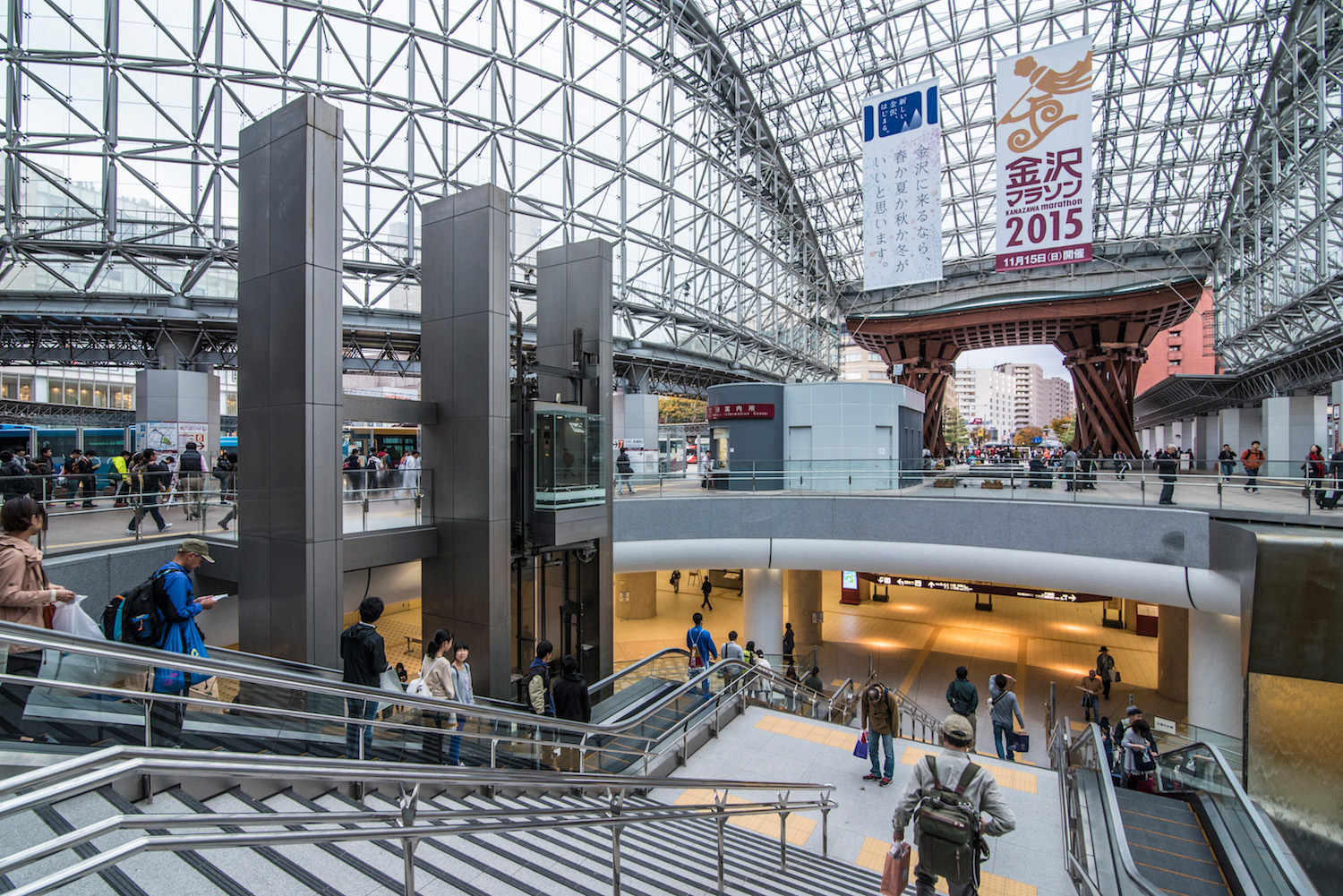
“It’s my fourth trip to Japan,” I replied to the man preparing the powdered green tea for me. “But my first tea ceremony.”
He smiled widely. “I’m glad you can finally experience this tradition.”
Part of me wanted to roll my eyes. I mean, drinking tea in a building that was expressly built to lure foreign tourists craving “tradition” as they explore Kanazawa, with a tea master who spoke better English than 95% of people I’ve ever met in Japan was far from authentic, to say nothing of how massive Kanazawa (which I’d heard, I can now say incorrectly, was like Kyoto, but smaller and less crowded) was. Kanazawa feels about as traditionally Japanese to me as Pokemon or Honda.
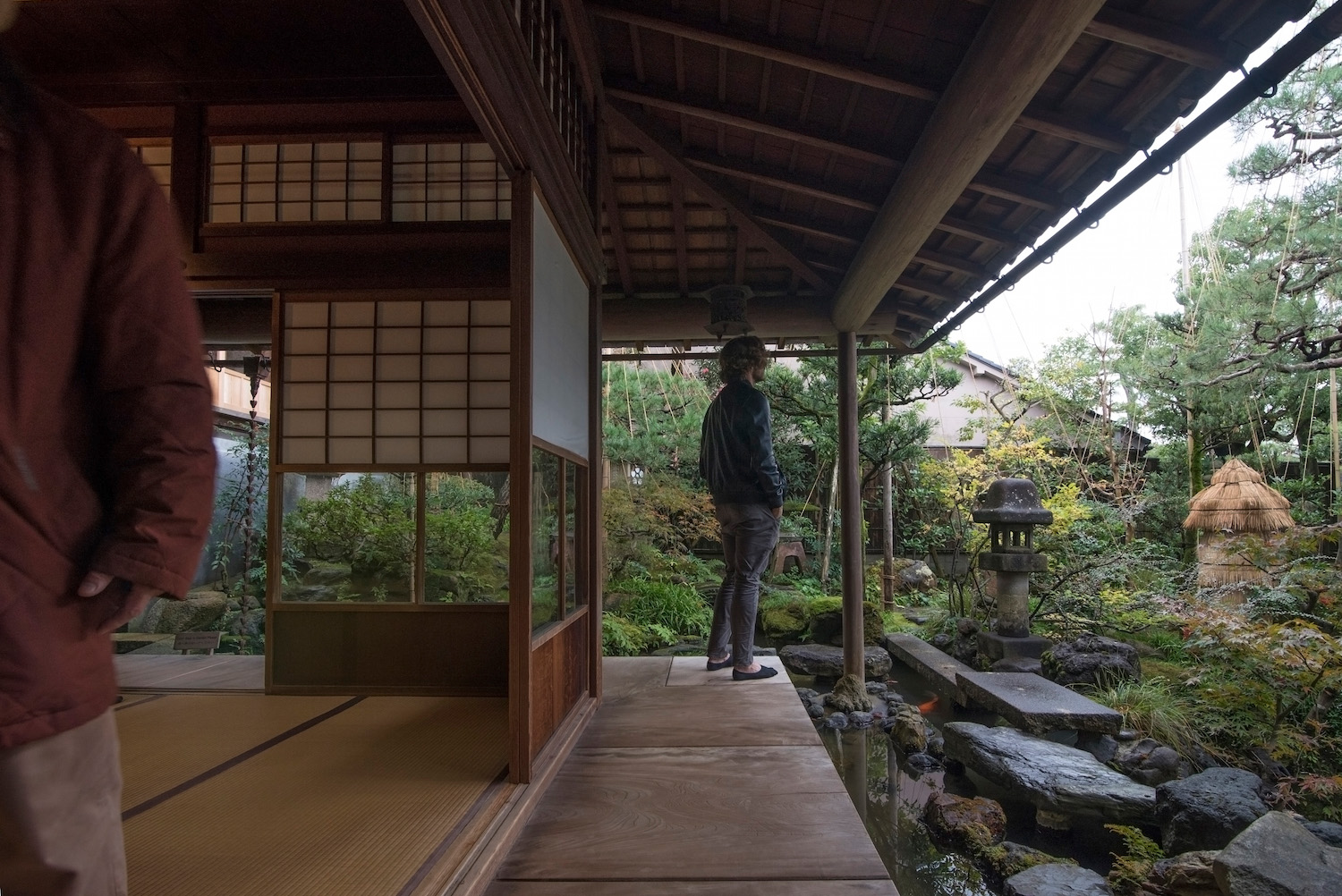
The woman who’d invited me inside for tea, a Kanazawa native, had said Nomura Samurai House was her favorite building in the city, but to me, it felt like Shinjuku station at rush hour. As I walked toward the garden, however, and managed to see an orange koi swim by in spite of how many tourists I saw reflected in the pond, I had a revelation: The Japanese have perfectly reconciled their past with their present.
As I’ve traveled through Japan on this particular trip, which began in a coffin-like hotel room in Tokyo with the ghost of Penny, and will end in a few hours when I pass through security at Toyama Airport, I’ve realized how important it is for me to learn how to do this in my own life.
If every cell in my body has regenerated since the last time I saw her, I thought as I walked past the Shirohije shrine, the Hotel Nikko towering behind it, then why can I still feel her in all of them?
Practical Matters: How to Walk the Nakasendo Way
This is, ostensibly, a Nakasendo trail blog. However, the post up to this point has been arguably more esoteric than it is practical, so I wanted to provide you some practical information, in case you want to walk Japan Nakasendo Way.
The first thing I want to share with you related to Nakasendo trail accommodation. As you’ll know if you’ve tried searching on your own, this can be hard to book in advance. And it’s by design: Many minshuku guest houses, from Magome to Tsumago to Kiso-fukushima, are only bookable by phone, and often only in Japanese. Below you can see a relatively comprehensive list of ones as of November 2018.

Accommodations to consider for your Nakasendo agenda
The second thing I want to tell you is where to start your Nakasendo Walk. The trail technically runs both ways, but most travelers ride a local train from Nagoya to Nakatsugawa, and then a bus to Magome from there. Some walk only from Magome to Tsumago, many continue beyond that to Nagiso or Nojiri and seem even walk all the way to Kiso-fukushima, a multi-day trek that covers dozens of kilometers.

Robert Schrader is a travel writer and photographer who’s been roaming the world independently since 2005, writing for publications such as “CNNGo” and “Shanghaiist” along the way. His blog, Leave Your Daily Hell, provides a mix of travel advice, destination guides and personal essays covering the more esoteric aspects of life as a traveler.








